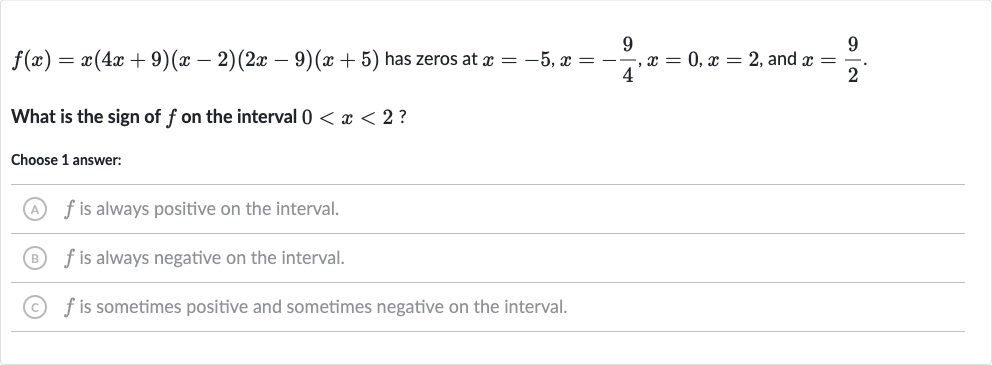Full solution
Q. has zeros at , and .What is the sign of on the interval ?Choose answer:(A) is always positive on the interval.(B) is always negative on the interval.(C) is sometimes positive and sometimes negative on the interval.
- Factors Sign Analysis: Since is a product of factors, the sign of on the interval 0 < x < 2 depends on the sign of each factor in that interval.
- Consideration of Zeros: The zero at doesn't affect the interval 0 < x < 2, because we're looking at values of that are greater than .
- Endpoint Consideration: The zero at is the endpoint of the interval, so we only consider values of that are less than .
- Positive Factors: The factors , , , and are all positive for values of in the interval 0 < x < 2, because their zeros are outside this interval.
- Conclusion: Since all factors are positive in the interval 0 < x < 2, the function is always positive on this interval.

